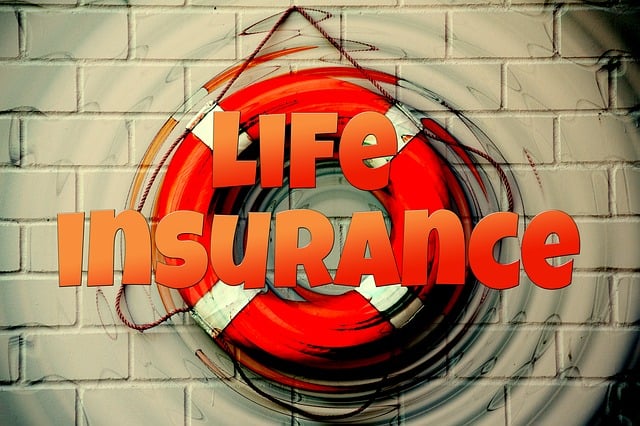Understanding How Life Insurance Works

Understanding Life Insurance
Life insurance can be defined as an understanding between an individual and an insurance company. In exchange for consistently paying the higher premium rates, the insurer agrees to pay out a one-time cash amount, referred to as a death benefit, to your heirs if you die while the policy is still in force. Some policies also have borrowing features such as permanent life insurance.
In what way does life insurance work?
Life insurance works by providing your beneficiaries with a lump sum which is paid to you in the event of your demise as long as all the premiums have been paid when due. We understand that users can spend the death benefit based on their preferences.
Before finalizing a life insurance policy, the insurer assesses various factors to determine your premium, such as:
- Age
- Gender
- Health and medical history
- Chosen coverage amount
- The division of the kind of life insurance such as term life insurance, whole life insurance, and the like.
In general, younger and healthier-minded applicants still get better premium rates. To select the suitable policy at the best possible tariff, it is useful to consider a few insurance providers and get a few life insurance quotes.
What Is the Purpose of Life Insurance?
It is a product that provides critical security by paying the beneficiaries a cash benefit after the death of the policyholder. Here are the best life insurance companies in 2021 and which policies they offer so you can support your dependents if you pass on. They do give a sense of relief since the identified family will not be struggling to make ends meet when you are not there.
In what way can life insurance be used?
The death benefit from a life insurance policy can be used by beneficiaries for any need they see fit, including:
- Expenses that were hitherto paid out of the income of the policyholder/policyholder’s family.
- Repayment of forms of debts including credit card balances, medical expenses, mortgages, car loans, etc.
- Handling funerals and the costs of the dying.
- Assisting children with schooling; school fees and other necessities.
Its goal is to act as a protection mechanism that enables your family to continue to live their normal lives without worrying about financial costs.
Additionally, many life insurance policies come with living benefits, which allow you to access a portion of your death benefit while still alive, under specific conditions outlined in the policy, such as:
- A terminal illness that one has been diagnosed with.
- Acquiring a chronic or critical illness.
Living benefits are encashable, meaning they can be spent in any manner, for instance on medical expenses that are not readily covered by an individual’s health insurance policy or on mortgage fees. Even though life insurance as well as health insurance work under different models, living benefits might be helpful to meet necessary expenses in healthcare services.
What does life insurance cover?
Life insurance typically provides a payout for most types of death, though there is normally a clause that excludes suicide within the first two years of the policy being active. This means that the following causes of death, among others, are covered:
- Accidents, such as car crashes
- Heart attack or other complications in the heart
- Joe understands that homicide (except when the beneficiary is responsible for the insured’s death)
- Illnesses
- Old age
- Death by the occurrence of war or acts of terrorism
Important Information That Applies to Life Insurance Exclusions
The suicide clause is inherent in almost all life insurance policies which state that the insurer cannot make a payout in the event the insured dies by suicide during the initial two years of the policy.
Even though the common disclaimers state that the policy will not pay if it was the policyholder’s fault that he or she died by suicide, life insurance companies are perfectly entitled to pay out nothing at all if they happened to find out that the policyholder lied on his or her insurance application especially if the death occurs within the year the policy was issued. For instance, if the insured person misrepresented his or her health or any other matter, the insurance company might decline the beneficiary claim.
The death and life insurance claim can be denied in the following circumstances: In a few cases such as the suicide of the assured by the beneficiary, the claim could be rejected. This scenario is under the slayer rule of the law.
Further, when there is a controversy as to whether the named beneficiary was forced into it, then a court has to decide who is entitled to the death benefit. When the court has made a final decision, the life insurance company shall henceforth go on and reward the rightful beneficiary.
Main Types of Life Insurance
Life insurance falls into two main categories: a classification between term life and permanent life insurance.
Term Life Insurance
Term life insurance is not only but also the cheapest and the most preferred type of life insurance policy. Basic types include the one where you agree to be covered for let us say 10 years, 15 years 20 years 25 years, or 30 years within which you pay a constant premium.
All the sums of money being paid out to the beneficiaries are usually free of any taxes in case you die during the term of the policy.
Once the policy term expires you can always continue to renew the policy each year, this is known as guaranteed renewable. However, with each renewal of the policy duration, there will always be an increase in the premium charged.
Permanent Life Insurance
Permanent life insurance provides lifelong protection, making it more expensive than term life insurance due to the following features:
- It covers you for all of your life.
- Most often it earns a cash value.
- It comes complete with internal policy costs something that may prove to be costly.
It also has a savings component which increases on a tax-favored basis throughout the existence of the policy. The good thing is that you may likely be in a position to make loans against this cash value or withdraw. If you decide to surrender the policy, you get the face value along with all the other benefits, except for the surrender fee.
It is also good to note that, in some cases, the cash value is built up over several years and so there may not accumulate large amounts of cash value all at once. In your case, the policy illustration shall demonstrate the projected growth of the cash value.
A few tips on how to select a proper type of life insurance policy
It is noted that those who intend to take up a policy must not be overwhelmed by the many types of policies available in the market. It is very important to determine the type of life insurance, whether one is term or permanent.
Term Life Insurance
If you need coverage for a certain number of years then go for a term life insurance policy. For instance, it can act as the “income replacement” for your family if you lock up and die in your productive prime years. Term life is also a good solution when you pay special attention to the costs. As it doesn’t build cash value and pays out according to the agreed period, the premiums charged are relatively cheaper than those of permanent life insurance.
It should be understood that depending on the change in your actual life, the requirements for life insurance can also change. Most term life insurance products come with extended terms, which allows the insured to switch to a permanent policy without taking a medical exam. Some of the details will depend on your insurer and the policy terms on offer at the point of purchasing the policy.
Permanent Life Insurance
A whole life insurance policy offers life insurance protection until the policyholder’s death. For example, one should wonder whether accumulating cash value over the long term is the goal. But if your ultimate aim is to build up your savings then you could consider having other saving and investment tools since permanent life assurance policies involve extra fees for the assurance of your life.
Also, the cash value from most of the policies is not intended for the beneficiaries. In general, the cash surrender value goes back to the insurance company when you die; your loved ones receive only the face amount of the policy – not the face amount plus the actual cash value. Certain policies will pay a death benefit with cash value, though these will have more costly premiums.
How much does life insurance cost?
Currently, our research shows that the average premium for a 20-year $500,000 term life insurance policy for a 30-year-old woman is $203 per year. In fact, for a 30-year-old man, the same policy will only come around $244 annually.
Some factors determine why life insurance premiums can differentiate. One of the considerations that a policyholder has to make involves the type of life insurance to take. For example, term life insurance is cheaper than whole life insurance most of the time even if you want to buy the same amount of coverage.
Below are some of the most common factors that influence life insurance premiums:
- Age: These people offer lower premiums to young people to underwrite because that demographic is less likely to die.
- Gender: They argued that women have a longer life expectancy than men and are therefore less likely to make claims on the insurance; this is why women are charged lower premiums than men (though not in Montana where they cannot charge different premiums based on gender).
- Health: Tarring one’s health is something that is used to determine the rates of life insurance. Insurers use a client’s history of medical conditions and current conditions to determine their longevity.
- Lifestyle: Information together with past recorded accidents, such factors as driving violations (for example, DWI or DUID), criminal history, or experiencing high-risk activities or occupations (such as recreational scuba diving) adjust the premium rates.




That was truly excellent content!
Many thanks for the original content, i am enjoying read it
Your passion really shines through here—such a pleasure to read!